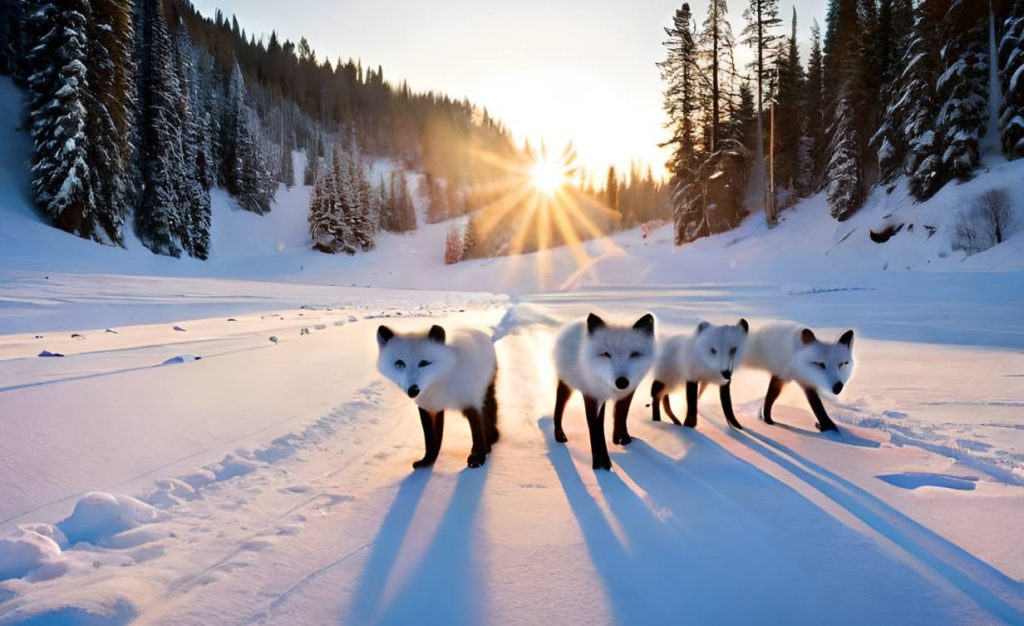
Scientific reports have shown a drastic increase in the amount of snowfall in Alaska in the past 150 years because of climate change. This phenomenon might seem unusual, considering that Alaska is getting warmer at a faster pace than any other US state. However, researchers are explaining that warmer air can hold more moisture, increasing precipitation and leading to more snowy days.
Generally, the amount of snow that would be considered record-breaking in other US states is just a regular Tuesday afternoon in Alaska. When a state famous for harsh weather conditions like Alaska breaks its snowfall record, you know it is a once-in-a-lifetime event.
Many of Alaska’s snowfall records have been located in Thompson Pass, right outside Valdez. However, one storm surpassed all previous records, resulting in the largest snowfall and the most incredible blizzard ever recorded in the state’s history.
In the winter of 1952-1953, a record-breaking 974.1 inches (2,474 cm) of snow fell in Thompson Pass, making it the highest-ever recorded snowfall in one season at one location in Alaska and across all fifty states. Thompson Pass is a gap in the Chugach Mountains, located northeast of Valdez, Alaska, and stands at 2,600 feet (855 meters). It is known as the snowiest spot in Alaska, with an average annual snowfall of 500 inches.
The regularly heavy snowfall in Thompson Pass rendered Richardson Highway drivable only during the summer. It was not until 1950 that a freight company foreman introduced a method of opening the pass with snowplows, and the highway became drivable year-round. The Alaska Road Commission paved the trail through the pass in 1955.
Because of the high amount of snowfall each year, there is a special Department of Transportation station located at the top of the pass to assist in snow removal. They remain extremely busy during the winter season, putting in great effort to keep the road clear and free of ice all year round. Their challenging task was even featured in a television special called "Alaska, Most Extreme" on the Discovery Channel.
April 2023 was an unusually snowy month for Southcentral Alaska. Anchorage received over 8 inches of snow, while the Matanuska-Susitna Borough received about 5 inches. As a result, the total snowfall for this winter exceeded 100 inches.
Alaska has experienced both heavy snowfall and almost no snow in the month of April, as stated by meteorologist Brian Brettschneider from the National Weather Service. This year, Alaskans have received around 8 inches of snow during that month. Therefore, while many people are tired of winter, it is important to remember that April snow is not a usual spectacle every year, but it should not come as a surprise either.
The western part of Alaska has experienced freezing weather this year. Nome marked its lowest April temperature ever recorded, regardless of the year. Kotzebue has also broken four or five new records for daily low temperatures, as has McGrath. Bethel, King Salmon, and Anchorage have had the coldest high temperatures for several days. For some of these locations, this is the coldest start to any April ever recorded, and these records go back for a long time.
Winter in Alaska typically lasts from October to March, but the temperatures and amount of daylight can differ depending on the region. Coastal areas tend to have milder temperatures, rarely dropping below 20° F. In Southcentral Alaska, there is usually a significant amount of snow during the winter months, making it ideal for skiing, snowmobiling (known as snowmachining to Alaskans), and dog mushing.
Winter in the Interior and Arctic regions are very different. In the Interior, snow can appear as early as October, and temperatures can drop below -30° F during winter. Although there is snow, Alaska's northernmost community, Utqiagvik, has less than 5 inches of rain annually. Therefore, the Arctic region of Alaska is technically regarded as a desert.
Traveling to Alaska during the winter months means you’ll get to experience the state’s weather at its harshest. While winter in this part of the world is remarkably cold, its idyllic snow-draped landscapes and the unforgettable Northern Lights are definitely worth seeing.